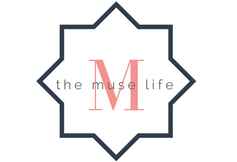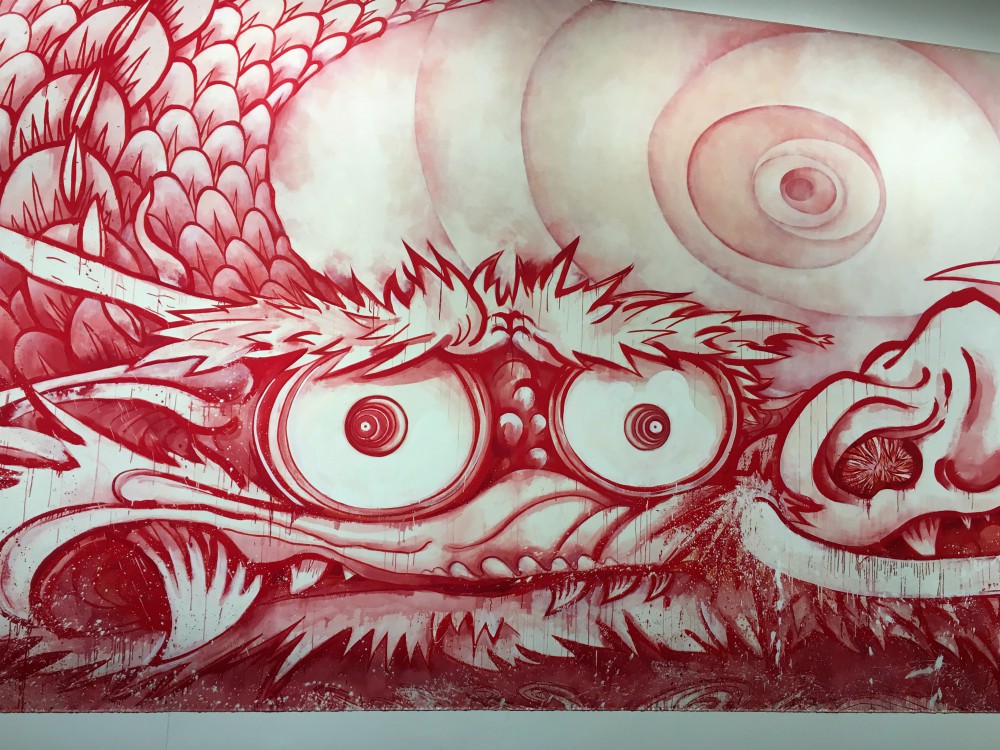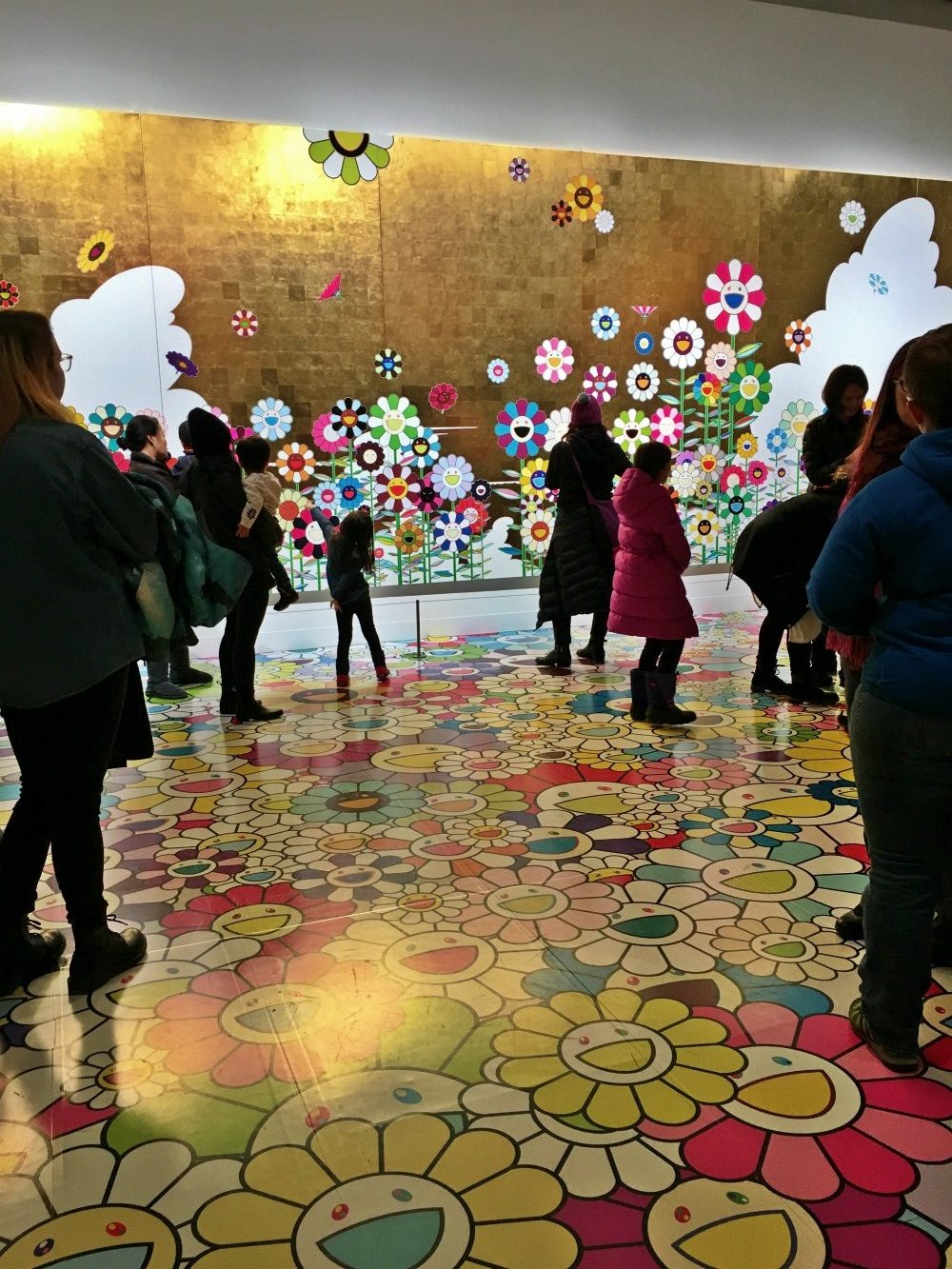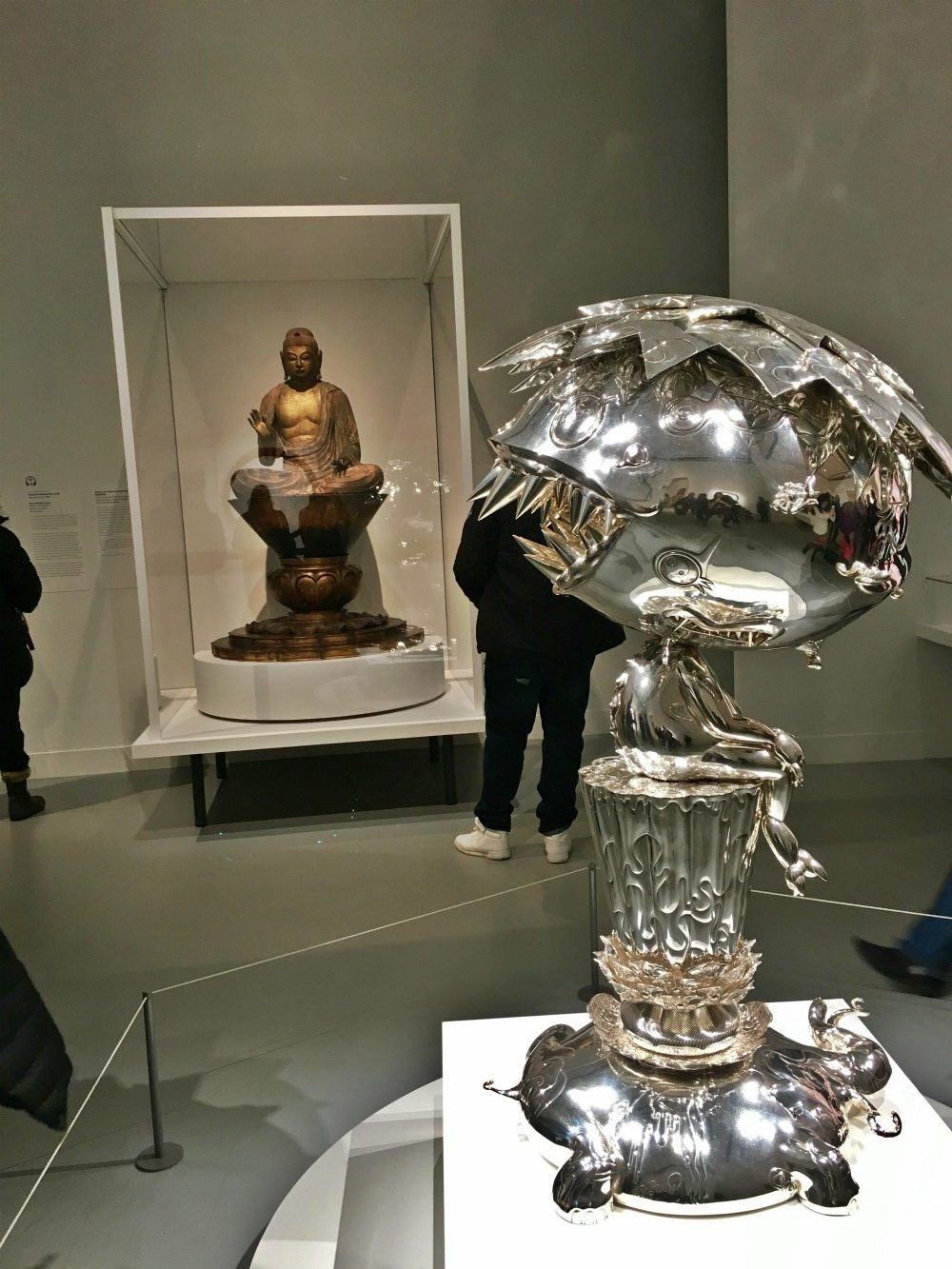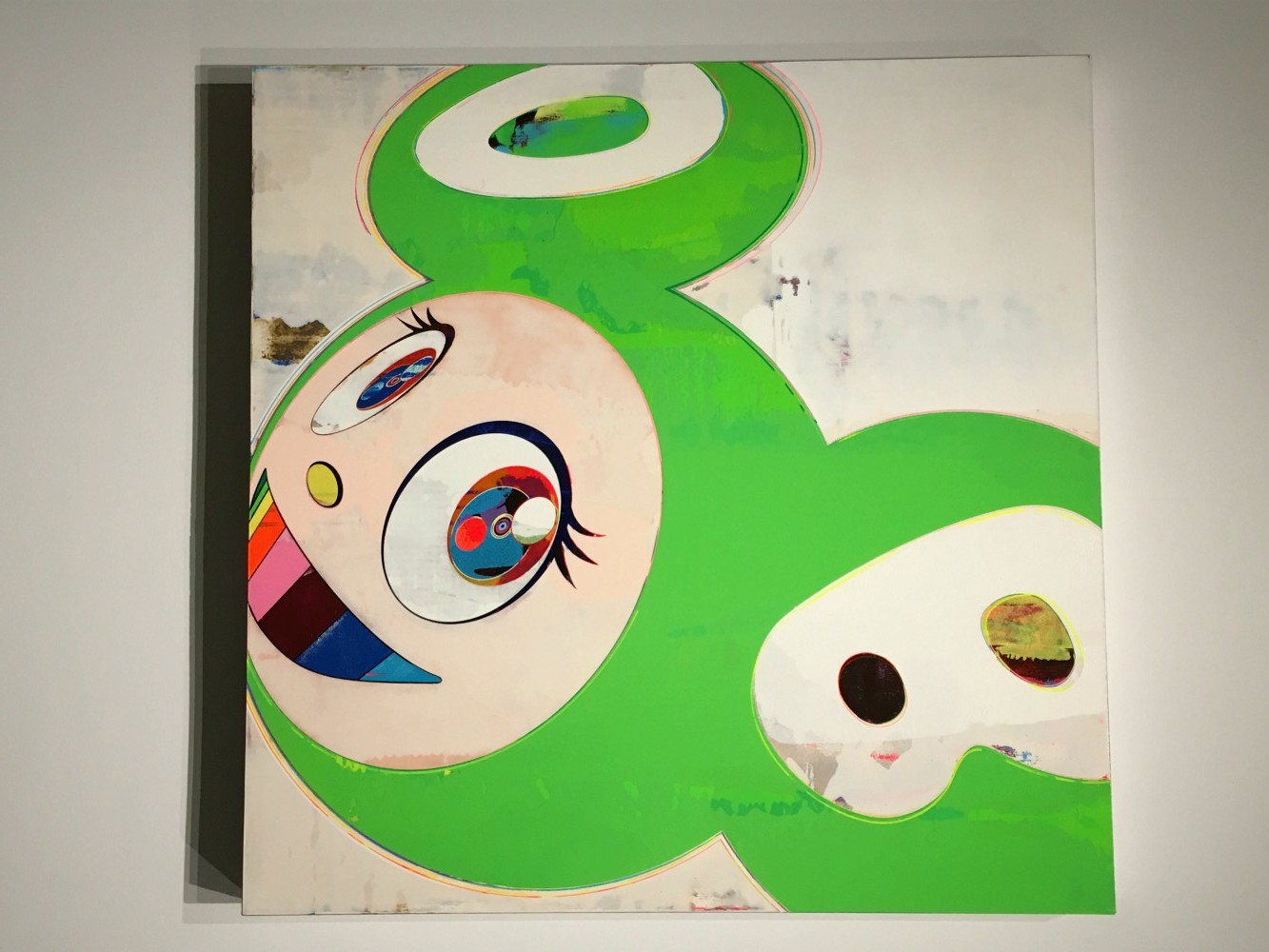When I was younger and thought I had a shot at being an artist, I turned to Anime how-to books to imitate a style that was super trendy and popular at the time. To make a long story short, I've found that playing music is the best way for me to be an artist — unless you're looking for stick figures and abstract water colors, drawing and painting are not my forte. This let down and the intense popularity increase of Anime (I'm not one to go crazy over the latest in pop culture, and am really bad at keeping track of what's 'cool') made me pack away those memories and forget about the art form. As luck would have it the MFA in Boston housed an exhibit this past year that felt like it was made for me.
Takashi Murakami's Lineage of Eccentrics had me falling in love with anime again. It's funny, inventive, super cool, and yes, 'eccentric.' But even more importantly, Murakami uses anime as a contemporary answer to Japanese folklore, sourcing inspiration from the traditional scroll painting traditions.
First, a bit on Japanese scroll painting. This tradition rose to its peak during Edo period Japan, scrolls and screens often reflecting religious motifs, allegories, folktales, and historical accounts. Similar to Chinese prints, ownership of these paintings was tracked to the sides of the main scene, often in the corners, with red characters distinctly marking the change of hands, a tradition Murakami also adds to some of his works.
This particular exhibit at the MFA was a collaboration with professor, Nobuo Tsuji, who assisted in the juxtaposition of the museum's Japanese paintings with Murakami's works to emphasize the inspiration of the centuries old art forms on the artist's work.
Take this Oval Buddha Silver, the perfect blend of the traditional features of the Buddha and the anime-esque whimsy of pop culture.
Murakami's inventiveness certainly doesn't stop at centuries-old inspiration either, his Mr. DOB character popped up throughout the exhibit, immediately putting a smile on my face. He's just so cool, and reminds me of the current (or maybe this too has passed me by and I still think it's cool) trend for musicians like Marshmello or deadmau5 to wear large masks when performing, simultaneously adding to and detracting from their identity.

One of my favorite parts of the exhibit was the breakdown of how Murakami comes up with characters, which is where I really started to understand how similar his works are to traditional Japanese scroll paintings. It's all in the process. Layers of characters and background elements are printed on top of each other, perfecting one figure before moving onto the next, creating a composition where all elements work seamlessly together. It has to be a painstaking process, but it's amazing to me that the same processes that worked for Edo artists are how Murakami chooses to work today (though he does have a herd of assistants and modern technology that help him produce his works to absolute whimsical perfection.
My other favorite was this beautiful, over 50ft-long Dragon in Clouds—Red Mutation. This room, the last in the exhibit, was the perfect ending to show the traditional paintings' influence on Murakami's on work. Thanks to Professor Tsuji demanding Murakami paint something without his assistants, he had Murakami reimagine an 18th century piece Dragon and Clouds by Soga Shōhaku. And no offense to Shōhaku, but I'd like to take Murakami's home with me, thank you very much!
I don't know what it is about these characters, Murakami pours so much personality into them. Just look at that dragon's face: cute, silly, and somewhat exasperated.
While this exhibit closed in April, if you have the chance to see a Murakami exhibit you have to go — he's incredibly popular right now so it shouldn't be hard to find one! Even if you think this isn't 'your thing,' promise me you'll try it out anyways, I bet you'll be as surprised as I was and want to linger in the anime covered walls forever.
